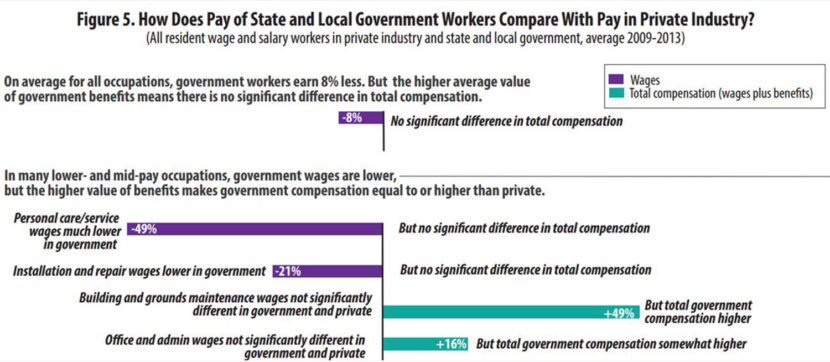
State and local employees in Alaska are paid less than private-sector workers, but benefits make up the difference, according to a new study from the University of Alaska Anchorage’s Institute of Social and Economic Research.
Public workers earned 8 percent less than those in the private sector, but total compensation was about the same, since public employees have better benefits.
Mouhcine Guettabi, an economics assistant professor, was an author of the study.
“This notion that public-sector employees are either over- or undercompensated, broadly speaking, really doesn’t hold, because – depending on which occupation you look at – you find different findings,” Guettabi said.
Higher-income workers in the public sector received less total compensation than similar private-sector workers. Lower-paid public workers had more compensation than those who worked for private employers, because they had better benefits.
Legislators proposed a bill, HB379, this year that would have stopped the pay increases that state workers receive every year or two based on experience and performance evaluations.
While the legislature didn’t pass the bill, it may be introduced again next year.
Putting downward pressure on state workers’ pay could make it more difficult to recruit and retain them, depending on the job, Guettabi said.
“It does give us a window into how difficult it is to implement freezes across the board that may affect certain types of recruitment a lot more than others,” he said.
The study was based on U.S. Census data from 2009 to 2013.
Since then, Alaska’s economy has been hurt by a downturn in oil prices. But Guettabi said that if the public sector gained an advantage since then, it could lose it during the next upturn.
“In six months, if the situation in Alaska improves dramatically, the private sector can restore benefits, can improve compensation,” he said. “The public sector tends to be a lot slower in doing so.”
A separate part of the study found that when private-sector workers move into government jobs, they receive similar compensation.
The study didn’t look at non-resident, federal, nonprofit or self-employed workers.

